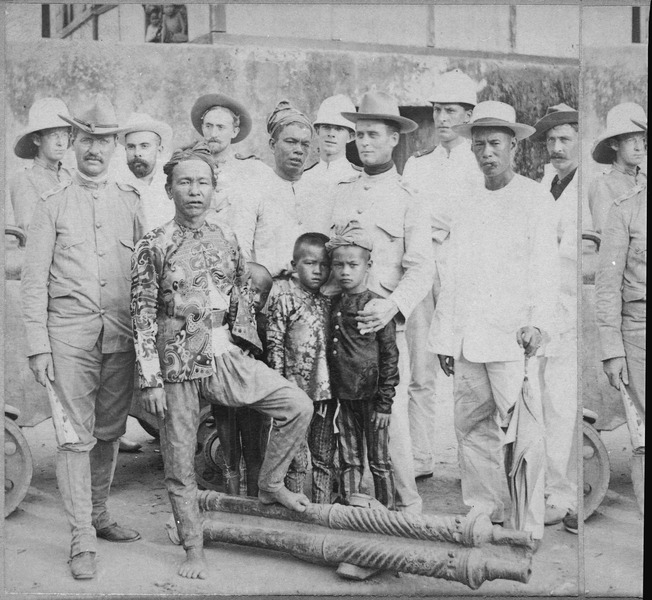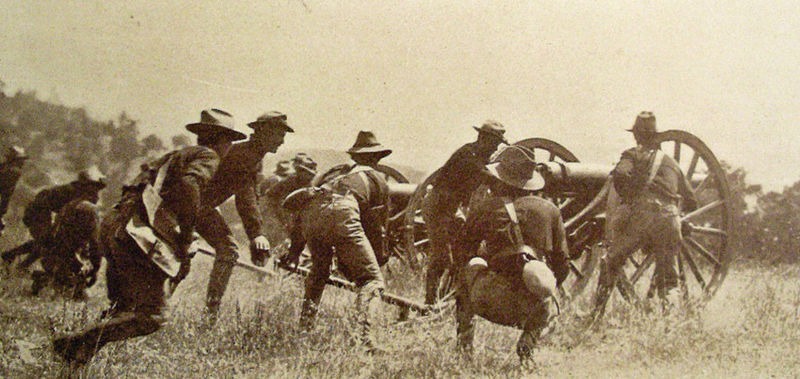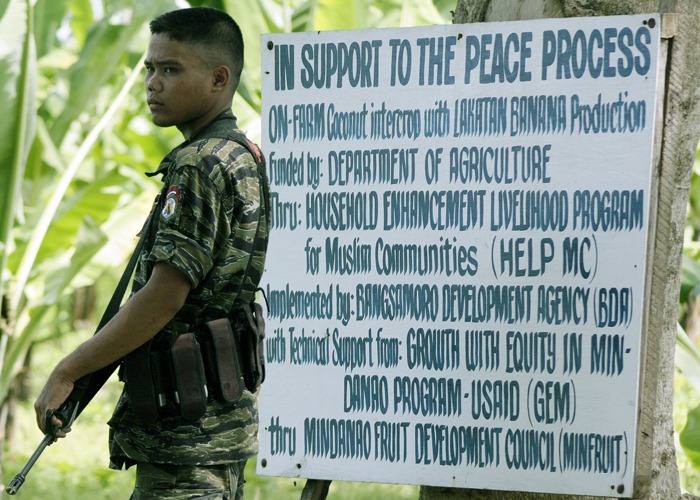The Philippines’ long-running military struggle known as the Moro Rebellion had a significant impact on Philippine history, politics, and society. The insurrection, which lasted for several decades and had a long-lasting effect on the Philippines, was caused by underlying historical, political, and religious issues.
In this article, we are going to take a look at the impact and legacy of the Moro Rebellion. Let us explore its consequences and the realms of politics, socioeconomic conditions, culture, and security. Through learning about its historical context and analyzing its far-reaching implications, we will be able to gain valuable insights into the complex dynamics that have shaped the Philippines up to this day. Read on to learn more about the impact and legacy of the Moro Rebellion.
Historical Context of the Moro Rebellion
There was a sizable Muslim community living in the southern areas of the Philippines at the time the Moro Rebellion began. These groups, referred to as Moros, have a unique cultural and religious identity, with an emphasis on Islam. They have a long-standing relationship with the pre-colonial Islamic Sultanates that ruled the area.
The Moro Rebellion has its origins in the time of Spanish colonial rule in the Philippines. The Spanish invasion in the 16th century changed the Muslim communities’ systems of autonomy and government, sparking movements of resistance. However, the insurrection picked up steam in the early 20th century, during the American colonial era.
A feeling of exclusion and unhappiness was enabled by the setting up of American control and policies, such as land reforms and the eviction of Moro communities. Tensions were also exacerbated by the Moros’ and the primarily Christian Filipino population’s different religious and cultural beliefs.
The Moro Rebellion was marked by a variety of leaders and factions that were essential to determining its course. Sultan Jamalul Kiram II, who led the Moro resistance against American forces in the early phases of the uprising, was one notable individual. Over the course of the uprising, a number of factions, notably the Moro National Liberation Front (MNLF) and the Moro Islamic Liberation Front (MILF), each with its own objectives and tactics, were developed. To solve the problems of the Moro community, these factions engaged in military conflicts with the Philippine government.
Political Impact of the Moro Rebellion
The Moro Rebellion had an important impact on politics, including greater power concentration in Manila, the Philippine capital. A more centralized form of government resulted from the national government using the rebellion to impose its control over the southern areas. The goal of this consolidation was to establish control over the rebellious areas and solve security problems.
The Philippine government also took action to meet the Moros’ demands for political representation in response to their struggle for self-determination. The result was the creation of the Autonomous Region in Muslim Mindanao (ARMM) in 1989. The Moro people were given some autonomy and self-government in this area, enabling them to have influence over local laws, education, and natural resources, among other facets of governance.
The Moro Rebellion had a profound effect on Philippine politics, changing the country’s government and constitution. The conflict sparked debates and changes in the Philippine system on the decentralization of power, the defense of minority rights, and the acknowledgment of cultural and religious diversity.
The peace agreements and negotiations that followed the uprising, such as the 1996 Final Peace Agreement with the MNLF and the subsequent negotiations with the MILF, also contributed to the development of the political environment. These initiatives aimed to find a political resolution to the conflict and guarantee the participation of Moro voices in the Philippine democratic system.
Socioeconomic Impact of the Moro Rebellion
There were huge population losses and human dislocation as a result of the Moro Rebellion. Numerous people and villages were uprooted as a result of the violence, which also disrupted social networks, livelihoods, and traditional ways of life. Numerous Moro families were compelled to leave their houses and sought safety elsewhere or in makeshift shelters, which had severe social and economic repercussions.
The Moro Rebellion had negative economic effects on the areas it touched. The conflict’s turbulence and insecurity impeded economic growth and investment in the impacted areas. Due to the disruption of farming operations and the forced departure of farmers, agricultural productivity, a key economic sector in the area, deteriorated. Economic difficulties were further aggravated by the absence of infrastructure development and restricted access to essential services.
The prolonged war hampered the infrastructure and general development of the impacted areas. Due to security concerns and resource constraints, infrastructure projects such as roads, bridges, and schools encountered considerable challenges. Local communities were unable to get necessary services as a result, which impeded their socioeconomic development.
Additionally, the absence of social and economic advancement in the conflict-affected regions exacerbated cycles of deprivation and marginalization. It increased the socioeconomic divide between the Moro territories and other parts of the Philippines, fostering a sense of social isolation and inequality.
Cultural and Religious Impact of the Moro Rebellion
The Moro Rebellion had a significant impact on the Moros’ identity and the preservation of their cultural heritage. The conflict highlighted the distinct cultural and religious practices of the Moro population, emphasizing the importance of preserving their traditions, language, and customs. It fostered a sense of cultural resilience and reinforced the Moros’ collective identity as a distinct community within the broader Philippine society.
The Moro Rebellion’s religious aspect highlighted the difficulties of interfaith relations in the Philippines. Religious hostilities between the Muslim Moros and the mostly Christian Filipinos grew worse as a result of the struggle. The dispute was frequently made worse by misunderstandings, stereotypes, and prejudices, which fueled religious hostilities and widened the gap between the two populations.
However, there were also chances for interfaith communication and understanding throughout the Moro Rebellion. With an emphasis on the value of tolerance, respect, and inclusivity, efforts were made to cross the religious barrier and encourage harmonious coexistence amongst various religious groups.
The idea of a uniform national identity in the Philippines was also contested by the Moro Rebellion. It emphasized the nation’s diversity by acknowledging the various cultural, religious, and ethnic groups that make up the country. The Moros’ fight for independence and commitment to cultural preservation helped people worldwide recognize and accept the Philippines as a multicultural and multireligious nation.
Discussions and reforms aimed at promoting a more inclusive and diversified national identity, one that recognizes and embraces the richness of the country’s cultural fabric, were sparked by the acknowledgment of the Moro population’s unique identity and their desires for autonomy.
Security and Peacebuilding
The Moro Rebellion created long-lasting security challenges in the Philippines. The conflict gave rise to insurgent activities by various factions, including the MNLF and the MILF, resulting in periodic outbreaks of violence and instability. These insurgencies posed significant threats to the security and stability of the affected regions, requiring continuous efforts to address the root causes and maintain law and order.
Through counterinsurgency operations, the Philippine government addressed the security threats provided by the Moro Rebellion. These initiatives combined military operations, intelligence gathering, and insurgency-fighting law enforcement initiatives. The government did, however, also acknowledge the necessity of a political resolution to the crisis.
Peace talks evolved into a key element of the government’s strategy. With a number of rebel factions, discussions and talks were opened, and this resulted in the signing of peace treaties and the establishment of ceasefire procedures. With the help of these peacebuilding initiatives, the war was meant to be permanently resolved while also addressing the Moro population’s fundamental complaints.
The Moro Rebellion has taught us important lessons about establishing peace and resolving conflicts. It emphasized the significance of dealing with root causes, such as problems with governance, marginalization, and socioeconomic inequalities. It stressed the necessity of comprehensive peace processes that include all relevant parties and respect the varied viewpoints and aspirations of the Moro population.
In the years following the rebellion, efforts are still being made to achieve long-term peace. A key step towards a more thorough peace agreement was made with the passing of the Bangsamoro Organic Law in 2018, which formed the Bangsamoro Autonomous Region in Muslim Mindanao (BARMM). The security and peacebuilding landscape in the Philippines is still being shaped by initiatives to uphold the law, encourage reconciliation, and guarantee the meaningful participation of all parties.
Moro Rebellion Legacy and Lessons Learned
In terms of its impact on subsequent wars and uprisings in the Philippines, the Moro Rebellion has left a lasting legacy. Other separatist and insurgent movements in the nation have used the Moro rebellion’s tactics, complaints, and objectives as a guide. The government and military forces’ approach to dealing with subsequent conflicts and attempting peaceful settlements has been molded by the lessons acquired from the uprising, both in terms of achievements and failures.
In particular, the identity, governance, and inclusion of Philippine society were significantly shaped by the Moro Rebellion. It emphasized the diversity of the nation and the value of appreciating and respecting many cultures, religions, and aspirations within the confines of the Philippine context. The uprising sparked debates about decentralization, autonomy, and the defense of minority rights, which had an impact on political choices and constitutional changes.
The consequences of the Moro Rebellion persist despite substantial advancements in peace talks and the creation of the BARMM. The disarming and reconciliation of former soldiers, the equal allocation of resources, and the resolution of historical injustices are just a few of the ongoing difficulties and unresolved problems. To find a comprehensive and long-lasting solution to these problems, consistent efforts and commitment are needed.
In order to avoid future conflicts, it is also important to resolve underlying grievances, advance social justice, and build inclusive governance, as demonstrated by the legacy of the Moro Rebellion. The rebellion’s teachings highlight the importance of meaningful discourse, respect for variety, and the pursuit of peaceful resolutions as crucial elements of conflict resolution.
Conclusion
The Moro Rebellion had indeed left an indelible impact on the Philippines. It has shaped its history, politics, and society in philosophical ways. The rebellion’s historical background, the political repercussions, economic effects, cultural and religious dynamics, as well as the difficulties of security and reconstruction, have all contributed to its enduring legacy.
Understanding the Moro Rebellion’s effects and legacy helps us better grasp the complicated forces that have molded the Philippines. In order to create a society that is more resilient and peaceful, it is crucial to address the underlying causes of conflict, encourage inclusivity, and cultivate long-lasting peace. We hope this article helped you learn more about the impact and legacy of the Moro Rebellion.



